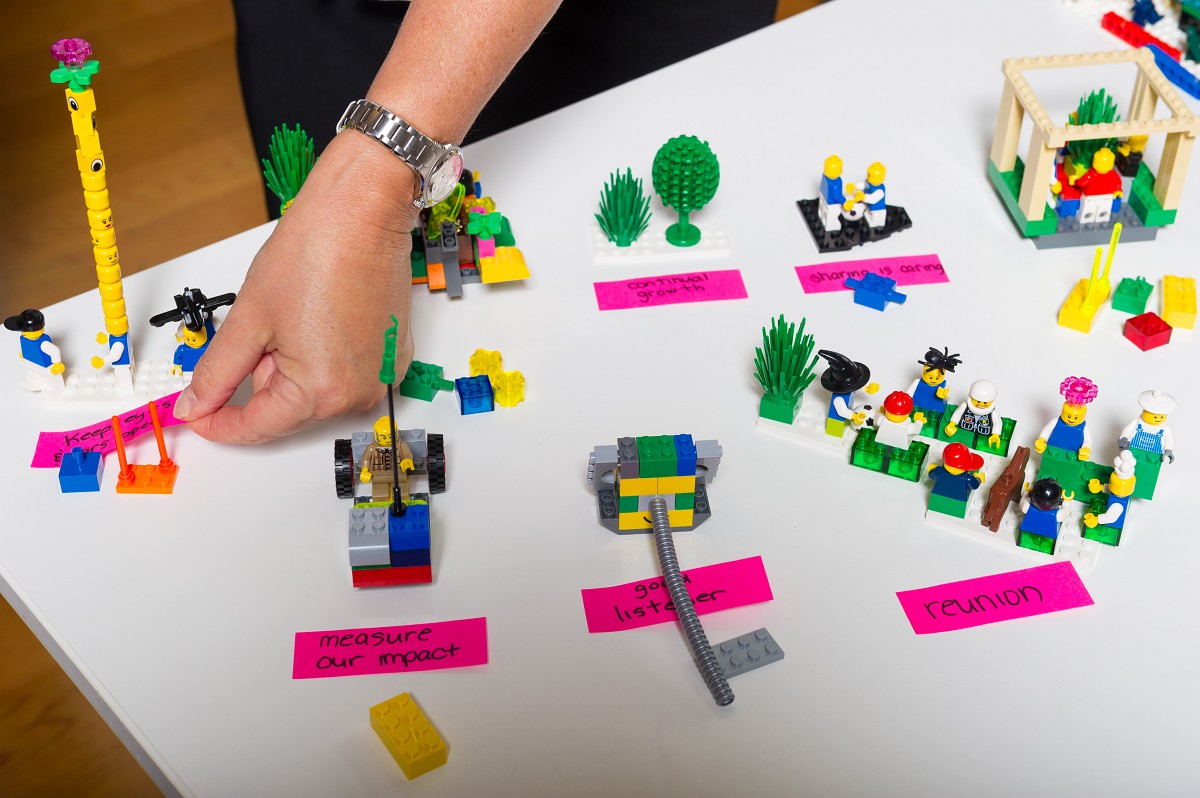
Crisis Management & Playing with Strategy:
Using LEGO® SERIOUS PLAY® Methods
We are now in the middle of a crisis.
If you are leading, you might not know what to do next. You might feel like you are stepping backward, sideways, or going in circles. You may even feel as though you are frozen in time.
Right now, leaders may feel the landscape is too uncertain and therefore completely unpredictable; they may as well try anything and trust their gut. On the other hand, they may think it is so predictable they can take a simple path forward using past successful actions.
Each perspective here is highly dangerous.
It is time to think diagonally!
Many reasonable leaders are recognizing the uncertainty of the situation facing us all, not only for their businesses, but their communities, regions, countries, and the entire globe.
What leaders choose to do next is critical.
Most leaders do not have a road map to follow. They must now create one. The development of this road map is crucial to your short-term success and long-term sustainability.
What makes for a good strategy in highly uncertain environments?
"Plans are useless, but planning is indispensable.—U.S. President Dwight D. Eisenhower"
Eisenhower was right. A successful strategy must be based on running and testing scenarios. This is strategic thinking.
We have been successfully using LEGO SERIOUS PLAY methods for
Crisis Management, Risk Management, Problem Solving, and Strategy since 2006.
To successfully move forward, we need to continue to use facts and analytical rigor from traditional planning processes. We must identify a range of potential outcomes. We cannot just test what we think is going to happen. We must also create scenarios for highly unlikely events. The insights that emerge will be extremely powerful, allowing us to create contingency planning. They also shine the light on things we can do right now to prepare, no matter what happens next.
After we have developed and tested various scenarios, we can evaluate our options and improve them in the playroom, which is a low-risk environment. We must use systems thinking approach, knowing all actions create counteractions and unintentional consequences.
Given how quickly things are changing, we can focus on strategic thinking by running and testing a number of small experiments that can be prototyped, tested, improved, and prototyped again in the real world. And no one experiment or strategic initiative should be so big that we cannot stop and move in a different direction once we gather more information. This is diagonal thinking.
When we live our strategy, we act with intention and everyone understands why we do what we do. This process is not about predicting the future. It is about developing possible stories about the future. It is about becoming aware of and understanding our business environment and landscape, and ensuring we consider all the facts and options.
We are not just focusing on the present or the past; we are not forecasting. We are benefiting from the collective tacit knowledge and the breadth and depth of insights from participants and stakeholders.
And we think in 3D which is the most brain-friendly way to think and communicate.